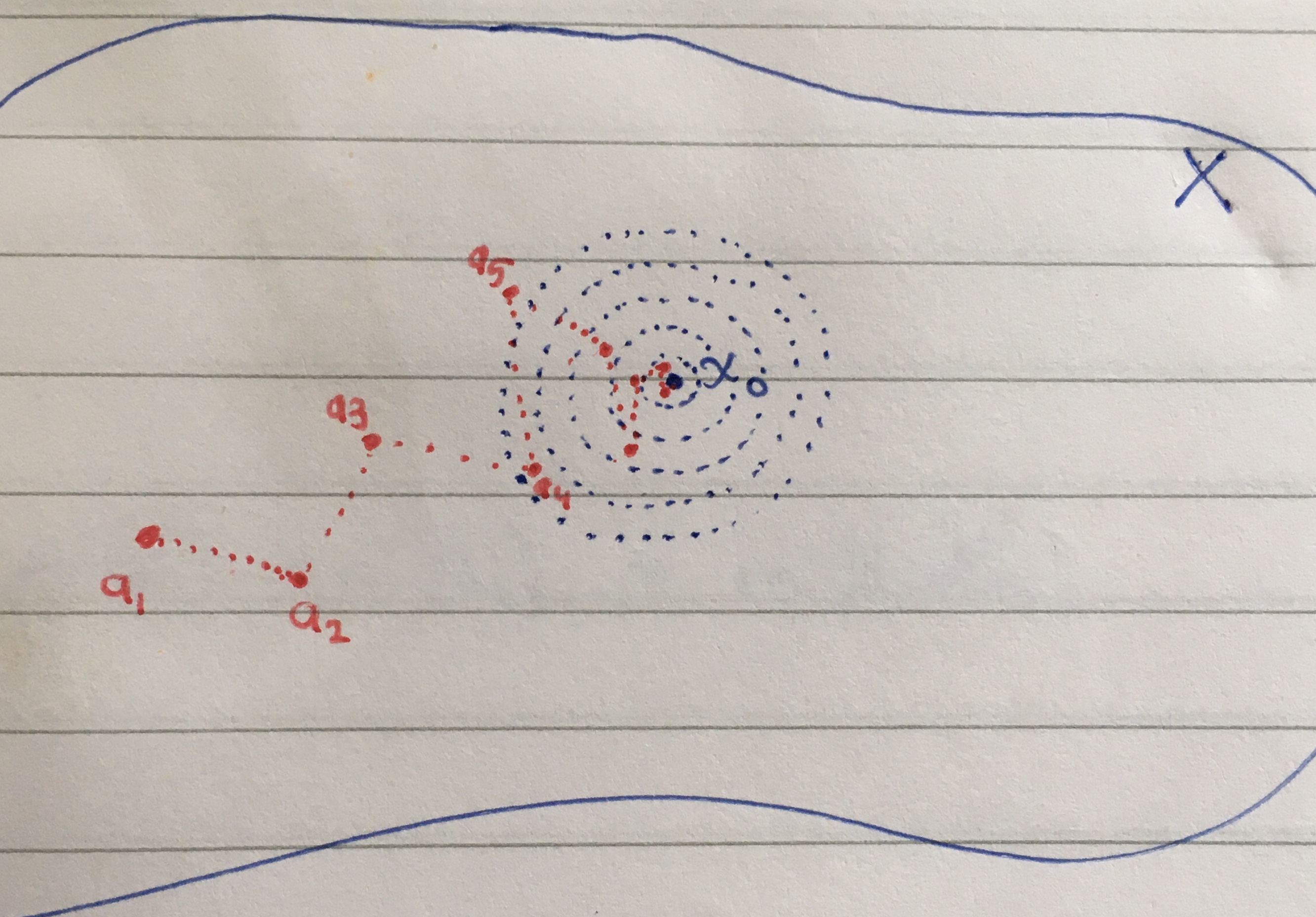Metric space. Sequence convergence
Sequence convergence, definition
Let \( X \) be a metric space, let \( x_0 \in X \) and let \( (a_n)_{n=1}^{\infty} \) be a sequence in \( X \).
\( (a_n)_{n=1}^{\infty} \) is said to converge to \( x_0 \) iff
[unfolding the definition of limits, this becomes...]

This next result should be internalized.
Lemma. Closed iff [some property of sequences...]
Let \( X \) be a metric space and \( V \subseteq X \).
Then \( V \) is closed in \( X \) \( \iff \) [some property of sequences...]
The proof was not immediately obvious to me. I did, however, find a way to visualize it, which I think makes the line of reasoning clear. Part of why the proof is important, I think, is that there are only two notions available from which the result needs to be derived: the definition of open sets and the definition of sequence convergence. So, it should be simple, yet it escapes an immediately obvious proof. Thus, I feel there is a mode of thinking that has its essence somewhat distilled into the line of reasoning.
